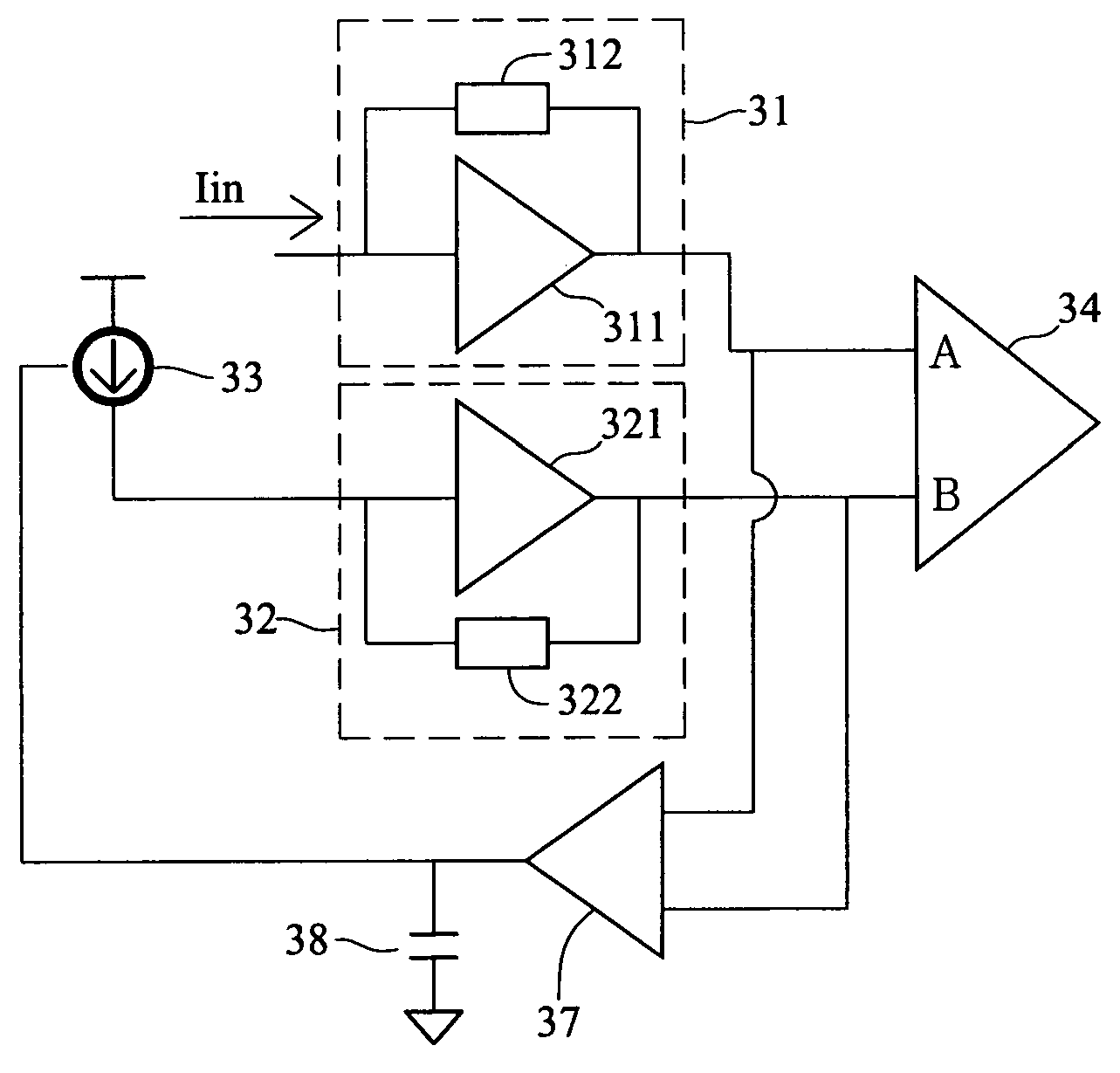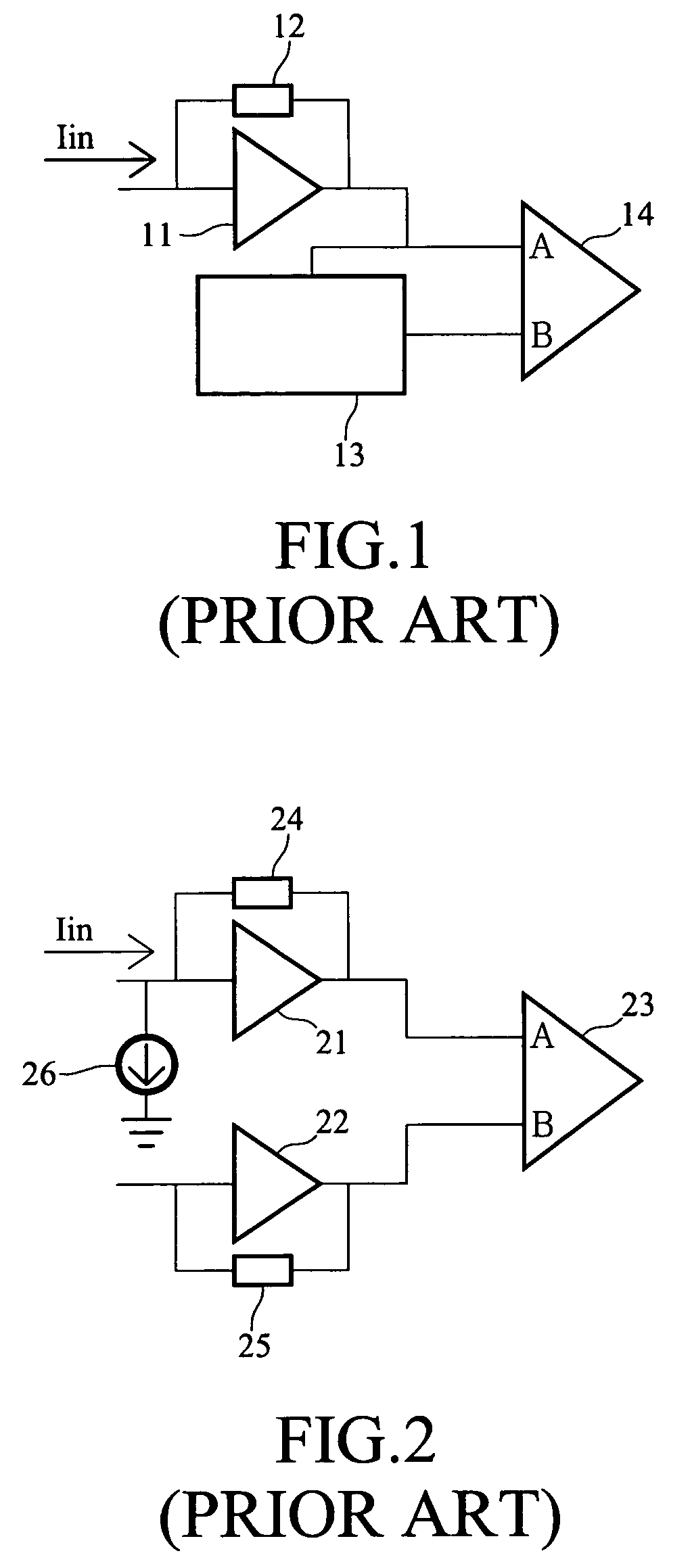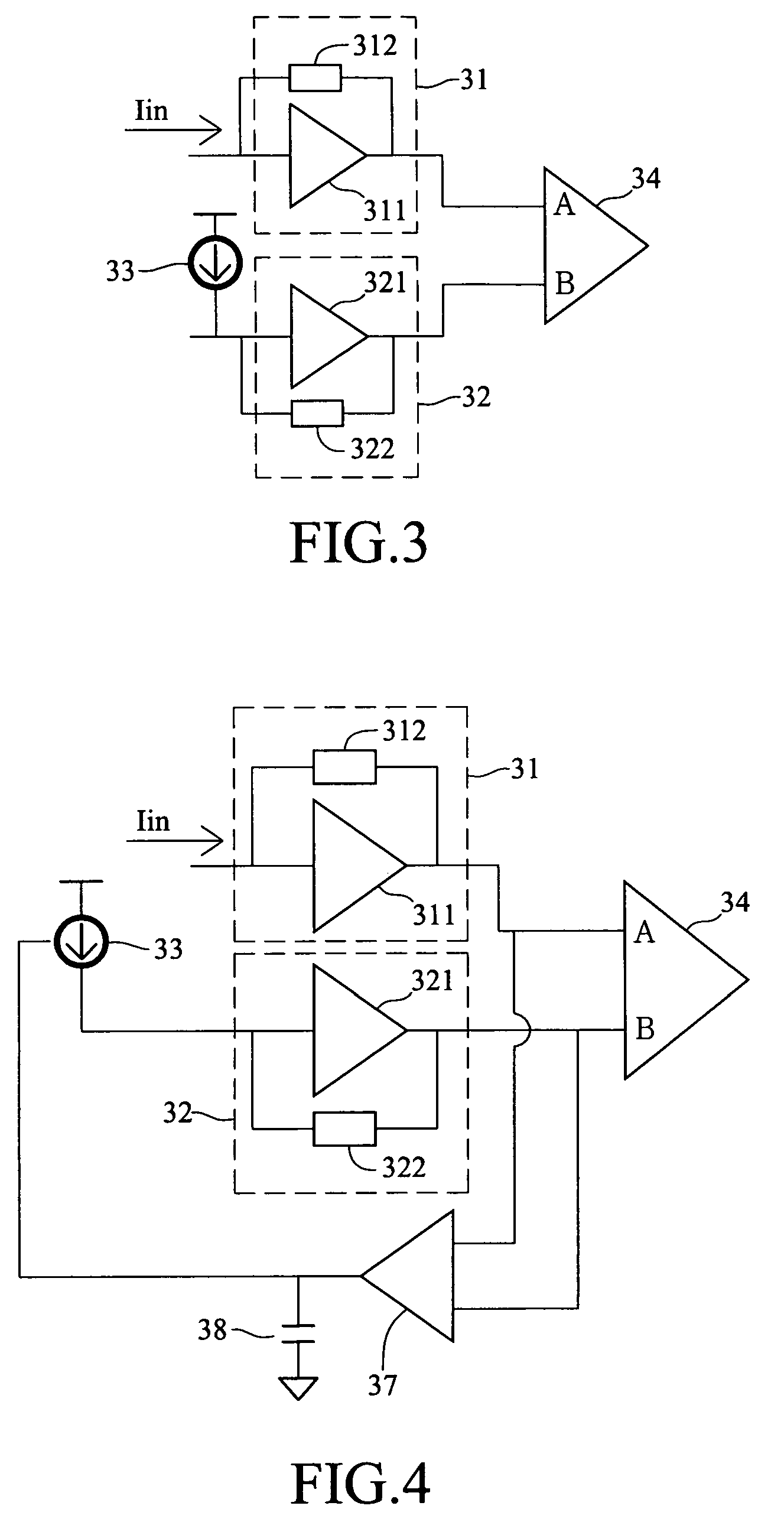High frequency amplifier
a trans-impedance amplifier and high-frequency technology, applied in the field of amplifiers, can solve the problems of 2 to be solved, difficult to set dc voltage, existing structure problems, etc., and achieve the effect of increasing the psrr of the trans-impedance amplifier and balanced dc voltag
- Summary
- Abstract
- Description
- Claims
- Application Information
AI Technical Summary
Benefits of technology
Problems solved by technology
Method used
Image
Examples
Embodiment Construction
[0027]Reference will now be made in detail to the preferred embodiments of the invention, examples of which are illustrated in the accompanying drawings.
[0028]FIG. 3 shows a circuit of the disclosed high-frequency amplifier. It is comprised of a first trans-impedance amplifier (TIA) 31, a second TIA 32, a variant current source 33, and a third amplifier 34. The first TIA output a first voltage, and the second TIA 32 outputs a second voltage. The first voltage output from the TIA 31 and the second voltage output from the second TIA 32 enter the third amplifier 34. The third amplifier 34 is a differential amplifier.
[0029]The first TIA 31 contains a first amplifier 311 and a first feedback resistor 312. The first feedback resistor 312 is coupled between the input and output terminals of the first amplifier 311. The first amplifier 311 is an operational amplifier.
[0030]The second TIA 32 contains a second amplifier 321 and a second feedback resistor 322. The second feedback resistor 322 ...
PUM
 Login to View More
Login to View More Abstract
Description
Claims
Application Information
 Login to View More
Login to View More - R&D
- Intellectual Property
- Life Sciences
- Materials
- Tech Scout
- Unparalleled Data Quality
- Higher Quality Content
- 60% Fewer Hallucinations
Browse by: Latest US Patents, China's latest patents, Technical Efficacy Thesaurus, Application Domain, Technology Topic, Popular Technical Reports.
© 2025 PatSnap. All rights reserved.Legal|Privacy policy|Modern Slavery Act Transparency Statement|Sitemap|About US| Contact US: help@patsnap.com



